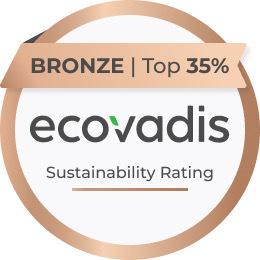Source of Fabric
Linen is made from the fibres of the flax plant, while cotton is derived from the cotton plant. Flax has been cultivated for thousands of years, making linen one of the oldest known textiles. Cotton, on the other hand, has been a staple in fabric production since ancient times, known for its ease of cultivation and global use.
Interestingly, whilst cotton is clearly a different fabric altogether, it is often referred to as ‘linen’ in the hospitality sector!
Texture and Feel
Linen has a coarser texture
when compared to cotton. Its fibres are thicker and stiffer, giving linen a slightly rough, textured feel that softens over time with use and washing. In contrast, cotton is typically softer from the outset, with a smoother feel. Egyptian or Pima cotton, known for its high thread count, can be incredibly soft and luxurious, making it the preferred choice for hotel bedroom linens.
Breathability and Moisture-Wicking
Both linen and cotton are breathable, but linen has the upper hand in this category. The fibres of linen are hollow, allowing air to flow more freely, which helps the fabric dry quicker making it a good choice for napkins or bedding. Cotton, while breathable, can retain moisture more readily and takes longer to dry.
Durability
Linen is one of the strongest natural fibres available, and its durability increases with washing. It resists wear and tear, lasting many years if properly cared for. Cotton, while durable, tends to break down faster with repeated washing, especially in lower-quality varieties. This may be the reason that restaurants choose linen for table coverings and napkins and the highest thread counts of cotton bed linen.
Wrinkling and Care
Linen is notorious for wrinkling easily, naturally giving it a more relaxed, casual appearance, or demanding greater attention during the laundering process. Many people embrace this natural crinkle as part of linen's charm; however, others prefer cotton, especially the high-thread-count versions, which is more resistant to wrinkles and maintains a smoother appearance after washing.
Sustainability
Linen is considered an eco-friendlier option. Flax requires less water and fewer pesticides than cotton, making it a more sustainable choice. Cotton, particularly conventional varieties, can be water-intensive and rely on chemical inputs.
Both linen and cotton offer unique advantages depending on the intended use.
Linen has a more textured feel and is generally a weightier fabric, offering an air of elegance to any high-end restaurant table. Linen washes well and has good longevity, when stored correctly, whereas cotton is far softer and irons better, making superior quality cotton a great choice for luxurious bedrooms.
Ultimately, your choice will depend on your priorities for comfort, style, sustainability and cost.




